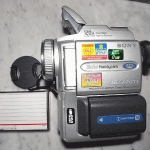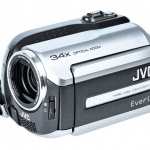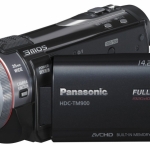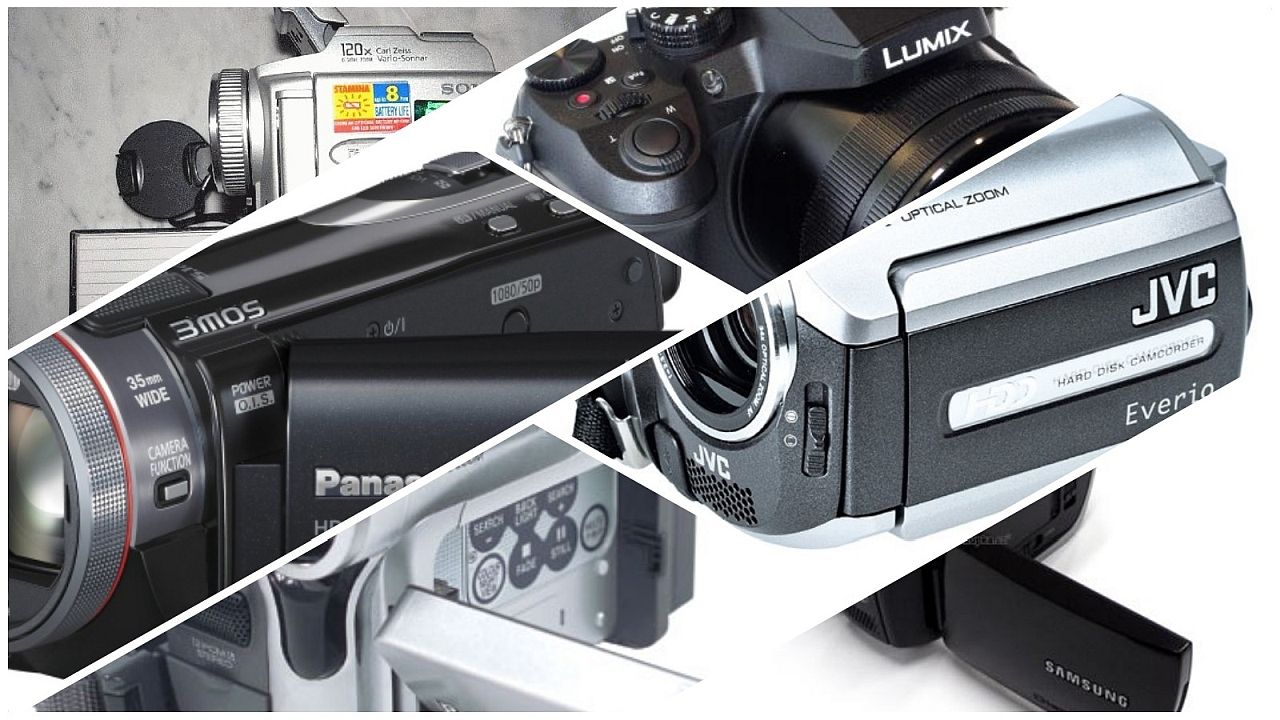This article deals with my video camera recorders throughout the years, my history of camcorders. I have never had any professional cameras, only a number of camcorders for the consumer market. I have not been loyal to any producer and remember having used Sony, JVC, Panasonic, Hitachi, Samsung and possibly more.
Generation one: Hi8 camera
I bought my first video camera in 1994. At that time it could have been a Video8 type but knowing me and having the price as a blurry memory it must have been an expensive Hi8 camera. The camera recorded onto a magnetic tape with a resolution of 560×480. (At least that’s what the literature tells me.) I used that technology for many years.
At that time I used to transfer the recordings from the Hi8 cassette tapes to VHS tapes. By doing this I was able to do some basic editing (i.e cutting) and it made my recordings more accessible to watch on TV. In addition I was able to reuse the Hi8 tapes a few times.
Although I made sure to buy VHS tapes of a particularly good quality, this naturally implied a quality loss in the conversion process. Furthermore, some of my early takes had not been transferred, and for almost a decade I was unable to watch my video photography from the end of the 1990s. I’ll return to this in a later section.
My cameras broke down for various reasons and at the end of the day the inevitable happened: There was a shift in technology.
Generation two: DVD quality on MiniDV tapes
 I moved from recording on Hi8 tapes to MiniDV tapes. Tapes of this latter kind were by definition digital but tapes nonetheless. The first of a series of DV-cameras was Sony DCR-PC110E, pictured here. I bought it in 2001.
I moved from recording on Hi8 tapes to MiniDV tapes. Tapes of this latter kind were by definition digital but tapes nonetheless. The first of a series of DV-cameras was Sony DCR-PC110E, pictured here. I bought it in 2001.
The DV technology allowed for DVD quality recordings, in other words 720×480 pixels.
A large part of my video production is on MiniDV tapes. This time I did not reuse my tapes but kept them stored away. There are perhaps 30 of them, all containing 60-90 minutes of video. I used to write on the tapes what time period they covered but it is quite obvious that this technology was not very accessible and hardly searchable.
In short the cassette tapes are time-consuming to watch and were not seen as often as they deserved.
Generation three: DVD quality takes directly to a hard disk
 In 2006 I made the next leap in terms of technology. I bought a JVC GZ-MG130 camcorder that recorded onto a hard disk drive (HDD). (There might have been a similar camera before the JVC but my memory fails me.) The resolution had not improved from the DVD quality of 720×480 pixels. The direct recording to a disk did however make me feel that I was finally going digital. I was now even able to copy single video clips as files from the camera to my computer. More about that in the next section.
In 2006 I made the next leap in terms of technology. I bought a JVC GZ-MG130 camcorder that recorded onto a hard disk drive (HDD). (There might have been a similar camera before the JVC but my memory fails me.) The resolution had not improved from the DVD quality of 720×480 pixels. The direct recording to a disk did however make me feel that I was finally going digital. I was now even able to copy single video clips as files from the camera to my computer. More about that in the next section.
By 2011 the obvious fact struck me: I had been fooling myself with the “HDD” stamp on my camera. I realised that the “HD” did not mean “High Definition” but simply “Hard Disk”. Watching my videos on TV or PC, and even mixing pictures and videos into a movie (like this video from Moscow) made it obvious that the potential for improvement was significant and long overdue.
Generation four: High Definition
 As a consequence, in 2011 I bought myself a “true” HD camera. The Panasonic HDC-TM900 came with a resolution of 1920×1080p. It is fantastic to watch my videos on the 42” HD TV at home. Moreover, for the first time there is almost no visible difference in quality between watching a photograph and a video scene on the screen.
As a consequence, in 2011 I bought myself a “true” HD camera. The Panasonic HDC-TM900 came with a resolution of 1920×1080p. It is fantastic to watch my videos on the 42” HD TV at home. Moreover, for the first time there is almost no visible difference in quality between watching a photograph and a video scene on the screen.
Mixing scenes from the two sources is a true joy, as this video bears witness to. Well not quite, as I will discuss in a later article on video editing.
Conclusions
My use of video technology has moved in five year shifts, so to speak. From Hi8 in 1994 to MiniDV (=DVD quality) tapes in 2001. From DVD quality recordings on a hard drive (HDD) in 2006 to High Definition (HD) in 2011. I’m looking forward to 2016 or sooner with 3D and even better HD quality. (Mind this: This article was written and published in 2012. I bought yet another combined photo and video camera in 2017, the Panasonic Lumix DMC-FZ2000.)
This also means that I had a period of more than 10 years in which I recorded on two different systems of tape. At the end I was unable to playback any tapes on my TV, PC or whatever terminal. I had in short ended in a technological cul-de-sac.
It was time for me to go about realising my dream of moving my tapes to a digital world.
Further reading
I am discussing the tremendous task of creating a digital collection of media in a series of articles.
- Taking care of your photographed memory (Introduction)
- Video photography: My journey through the history of camcorders
- NEXT CHAPTER: Making old video available on a digital platform
- Working on digital video files
- The making of a digital photo collection
- The art of geotagging pictures
- Building a media archive of pictures and video clips
- Storing your media archive and keeping it safe
- Making YouTube videos from photos and video clips

